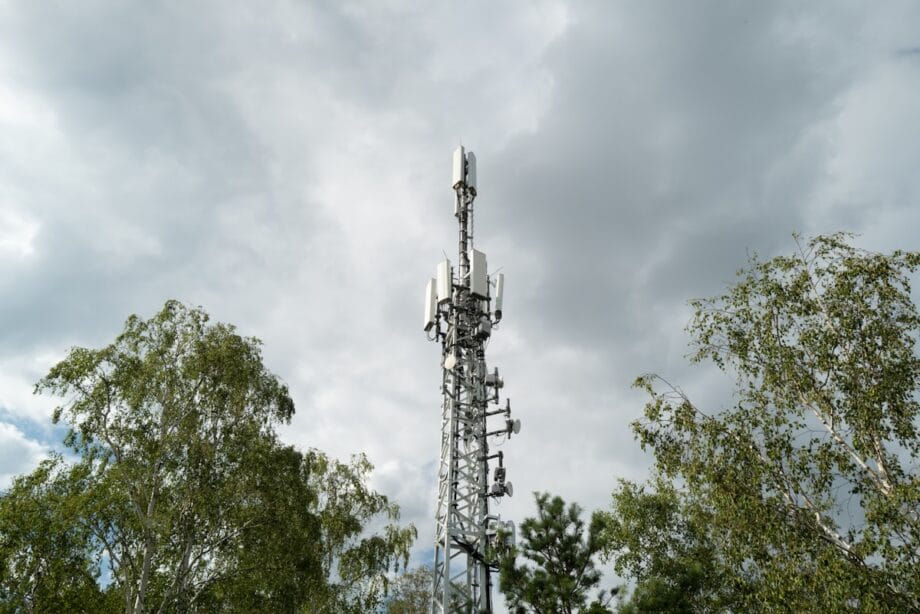Showcasing Innovations in 6G: Booz Allen, Cisco, MITRE, ODC, and T-Mobile Collaborate on Groundbreaking Applications via NVIDIA AI Aerial Platform
Summary of Developments:
- NVIDIA, in partnership with industry leaders, has unveiled the United States’ inaugural AI-native wireless stack for 6G, meticulously integrating sophisticated AI across hardware, software, and architectural frameworks to ready networks for an impending surge in AI-driven traffic.
- Utilizing the NVIDIA AI Aerial platform, this pioneering stack facilitates remarkable applications featuring multimodal integrated sensing and communication, which enhances public safety and promotes AI-led spectrum agility and sensing — achieving unparalleled spectral efficiency and unbroken connectivity.
- The American AI-RAN stack is also poised to create novel revenue avenues for telecommunications providers.
GTC Washington, D.C. —Today, NVIDIA has proudly presented the first AI-native wireless stack for 6G in the United States, showcasing novel applications designed to propel next-generation wireless technology forward, in collaboration with esteemed partners Booz Allen, Cisco, MITRE, ODC, and T-Mobile.
As artificial intelligence transcends its conventional realm in smartphones to encompass cameras, augmented-reality eyewear, robotics, autonomous vehicles, and an array of connected devices, the demand on wireless networks escalates to accommodate billions of connections with unmatched scale and efficiency.
To confront this pivotal challenge and advance transformative innovations like integrated sensing and communications (ISAC)—a vital capability for bridging the physical and digital realms—wireless networks must evolve to adopt an AI-native paradigm across every component: hardware, software, and architectural design.
These AI-native infrastructures allow for the maximization of spectrum utility—the radio frequencies essential for transmitting wireless signals. The AI-RAN architecture embodies the essence of next-generation wireless communication, uniting connectivity, computational capabilities, and sensing into a singular platform enriched with software-defined applications.
“The architecture of 6G is being constructed with AI at its nucleus—unlocking remarkable spectral efficiency, extensive connectivity, and revolutionary applications,” stated Ronnie Vasishta, Senior Vice President of Telecom at NVIDIA.
“Collaborating with industry pioneers, we have developed an AI-native wireless stack equipped with advanced features, ensuring that the United States will play a crucial role in the evolution towards 6G.”
First Made-in-America AI-Native Wireless Stack at NVIDIA
In a span of just six months since the initiation of the AI-WIN project, NVIDIA and its collaborators have fabricated a complete AI-native wireless stack, successfully conducted the inaugural user-to-user phone call, and engineered groundbreaking 6G applications at NVIDIA’s facility in Santa Clara, California.
This innovative system unifies the NVIDIA AI Aerial platform with 5G RAN software from ODC, complemented by user plane functioning and 5G core software from Cisco, along with specialized 6G applications designed by MITRE and Booz Allen.
Cisco is advancing secure network interconnectivity for the AI-driven era through the AI-WIN initiative, establishing a strong foundation for enabling physical AI and integrated sensing with remarkable efficiency and security.
“Through this collaborative effort, we are forging the future of intelligent, secure connectivity—where AI is interwoven into the very fabric of mobile networks and services,” remarked Masum Mir, Senior Vice President and General Manager of Cisco Provider Mobility.
“Together, we are leveraging AI to create networks that can sense, learn, and act in real time, thus empowering service providers to offer premium business and consumer services in the AI landscape.”
Cerberus ODC’s commercially available, fully software-defined 5G RAN, driven by the NVIDIA AI Aerial platform, is setting new industry benchmarks by facilitating simultaneous RAN and AI workloads for critical enterprise applications, outperforming legacy RAN systems with capacities seven times higher and power efficiencies 3.5 times greater.
Innovative Applications Shape 6G Standards
As part of this fruitful collaboration, NVIDIA and Booz Allen have introduced an unprecedented multimodal ISAC application, merging camera vision with radio-frequency sensing to achieve meticulous detection and tracking capabilities, even in low-visibility scenarios.
While camera vision can identify moving entities, it struggles to track their trajectories or discern them amidst obstructions. Conversely, radio-frequency sensors have the capacity to reveal an object’s location, velocity, and proximity—sensing its presence in the absence of visible light.
The composite use of camera vision and radio-frequency data in the innovative ISAC application delivers enhanced spatial awareness in real time, enabling potent use cases in public safety, industrial surveillance, and national defense, outstripping traditional single-modality sensing approaches.
Furthermore, an AI-driven spectrum agility application, engineered by MITRE, oversees wireless spectrum allocation at a cell site in real-time, allowing users to enjoy seamless connectivity while enabling operators to reap substantial gains in spectral efficiency.
In contrast to conventional methods that deactivate entire network bands upon detecting interference, this application harnesses AI to focus on and obstruct only the affected frequencies, maintaining uninterrupted consumer services—yielding substantial advancements in spectral efficiency and addressing longstanding challenges in spectrum management and operations.
During NVIDIA GTC in Washington D.C., Booz Allen showcased its AI-enhanced spectrum sensing application, R.AI.DIO can promptly detect and classify various forms of interference, including malicious jamming devices and unauthorized network users.
This functionality empowers operators to swiftly react to threats and automatically mitigate issues, ensuring the integrity of the network.

The NVIDIA AI Aerial software libraries enable these nascent 6G applications by enhancing performance and efficiency through the integration of novel AI and neural network-based models.
Additionally, the newly introduced NVIDIA Aerial Framework offers modular, programmable pipelines that allow for the seamless incorporation of third-party applications into the AI-RAN stack.
The application programming interfaces within this framework permit these applications to access real-time physical-layer data—the foundational data form in radio signal processing—thereby enriching ongoing training and reinforcement learning for AI models dynamically.
AI-native wireless networks herald a pivotal transformation in the telecommunications landscape as it transitions from 5G to 6G, facilitating exceptionally efficient edge AI inference and sensing capabilities to accommodate an astronomical number of network connections and generate new revenue streams for operators.
Source link: Nvidianews.nvidia.com.






